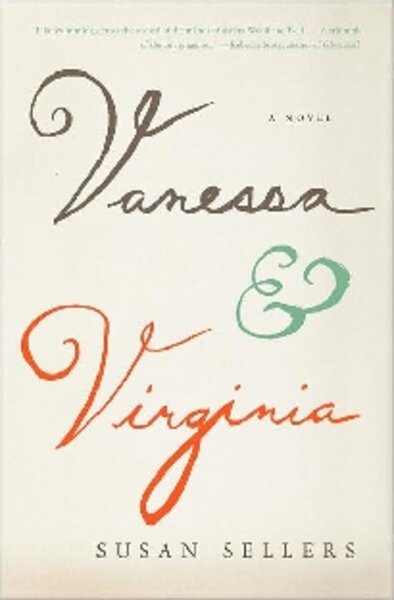Vanessa and Virginia
Loading...
It’s undeniably rich material for a novel: two sisters, one a renowned Impressionist painter, the other a famous modernist writer, both of whom led unconventional lives overshadowed by too many deaths.
In Vanessa and Virginia, Susan Sellers, a Virginia Woolf scholar at St. Andrews University in Scotland, explores the close but rivalrous relationship between Vanessa Bell and Virginia Woolf, the two talented, tormented Stephen sisters, born less than three years apart.
Sellers’s novel is narrated by Vanessa when she is old and arthritic. It is addressed to her sister, still sorely missed years after she drowned herself in the River Ouse with stones in her pockets.
Sellers knows her subject inside-out – which is both a strength and problem for her book. Unlike Michael Cunningham, who used “Mrs. Dalloway” to create an entirely new and stunning novel, “The Hours,” Sellers hews closely to her source material. But in aiming for something more impressionistic than conventional historical fiction, her narrative has a sometimes beguiling, sometimes frustrating elliptical quality.
Because Vanessa’s intended audience – her dead sister – knows everyone she’s talking about, her narrative deliberately elides such anchoring details as last names and dates. It is hard to say whether “Vanessa and Virginia” will resonate for readers unfamiliar with the history, or whether it will matter if they don’t know that Vanessa’s lover “Roger” is critic Roger Fry and friend “Maynard” is the economist Maynard Keynes.
But readers familiar with the Bloomsbury set may feel as if they’re watching a paint-by-numbers portrait emerge. Seeking to fill in some blank spots – including the year of Woolf’s birth (1882) and death (1941) – I picked up Nigel Nicolson’s short biography, “Virginia Woolf”; this is one case where fiction just can’t compete with the facts.
Sellers makes an interesting but challenging choice in designating the painter, not the writer, to tell this story. Her narrator notes, “You were the one with words. You were the one who knew how to take an event and describe it so that its essence was revealed. I do not have your talent. If you were here you would know how to tell this tale.”
Vanessa views her tale through what she calls “the kaleidoscope of memory.” The aim is to capture in prose the fracturing effects of Cubism and Impressionism, mirroring the sisters’ artistic styles. Unfortunately, to underscore her narrator’s identity as a visual artist and express her state of mind, Sellers relies on too many descriptions of paintings, as tedious to read about as dreams.
Far more compelling are her evocations of the rivalry that began with the sisters’ competition for attention from their overextended mother – who, with three children from her first marriage and four with Leslie Stephen – never had enough time for poor Vanessa, the eldest of the second closely spaced batch. “I need her to tell me she loves me,” Vanessa recalls thinking at 16 as she watched her mother die.
The two girls also competed over Thoby, the brother born between them, whose sudden death in young adulthood from typhoid propels Vanessa into marriage with Clive Bell. Even this compromised marriage arouses Virginia’s jealousy. While Vanessa is preoccupied with her newborn son, whom Virginia snidely calls her “appendage,” Virginia sidles up too close to Clive. Vanessa seeks comfort in an affair with the attentive Roger Fry, though she isn’t in love with him, either.
The sisters’ open marriages and open acceptance of homosexuality help drive Sellers’s novel.
The great love of Vanessa’s life, artist Duncan Grant – at one time her younger brother Adrian’s lover – is also the source of her greatest frustration, which Sellers captures vividly. Vanessa unhappily allows Duncan’s lover, Bunny (David Garnett), to live with them, realizing that otherwise Duncan will seek male companionship elsewhere. Things get even more gnarly when Angelica, her daughter with Duncan (who until adolescence believes that Clive Bell is her father) marries Duncan’s ex-lover, Bunny.
Sellers’ narrator comments with remarkable understatement: “The edifices of convention have been razed to the ground,” adding, “How entangled our lives must seem to anyone outside the skein.” She calls her domestic arrangement “our queer triangle,” though hexagon is probably more like it.
Fortunately, the sisters are better at divvying up their artistic domains, “placating each other by exaggerating our differences, renouncing all claim to the other’s field.”
“Vanessa and Virginia” captures the sisters’ seesaw dynamic as they vacillate between protecting and hurting each other, depending on who is up and who is down. For all their competition – each picturing the other as more content and successful – they are as intimately connected as twins. Through it all, work is their refuge – from their lives and themselves.
Heller McAlpin, a freelance critic in New York, is a frequent Monitor contributor.






